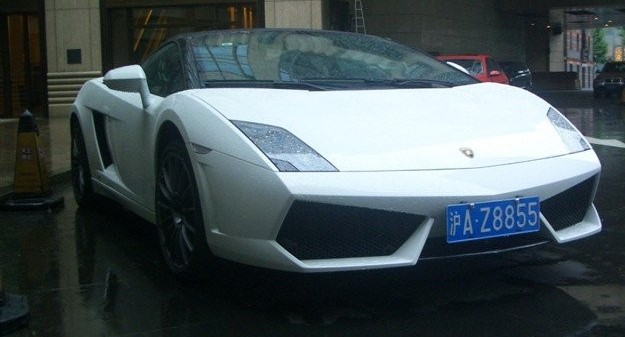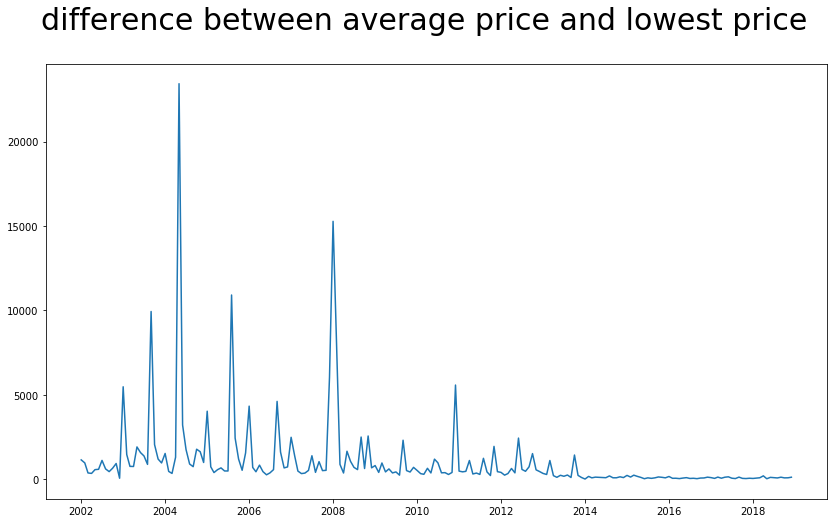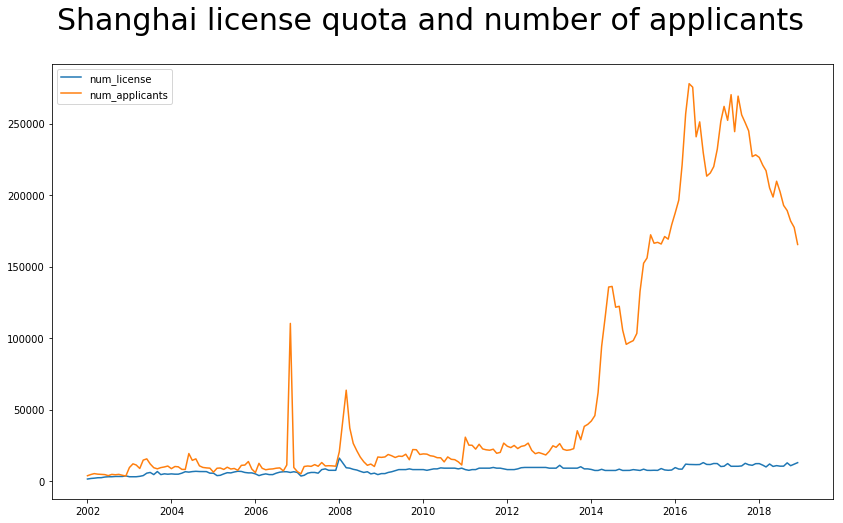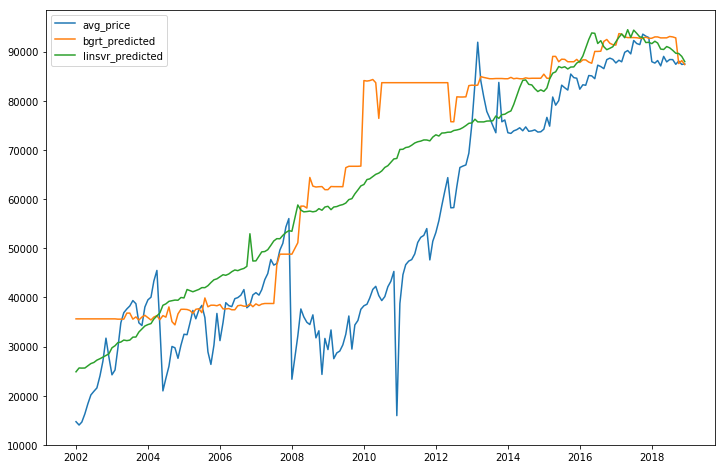Shanghai License Plate Auction
UVA CS4501 Markets Mechanisms and Machines Final Project
Chang Feng, Caroline Zhao, Kathy Wang

Motivation
Increasing traffic congestion is one of the biggest problems facing big cities such as New York and Shanghai.
To tackle this challenge, cities have been trying out different market mechanisms to curb increasing traffic.
New York have been thinking about implementing road congestion pricing.
Shanghai, however, decided to curb traffic by auctioning off a limited supply of license plates every month.
Up until 2008, Shanghai have been using a single bid auctioning format. But as license plate price
soared, Shanghai decided to switch auctioning format by allowing bidder to revise their bids. Our project aims to determine
whether the new format helped with curbing the rising license prices.
A Little About The Auction
Prior to 2008, Shanghai used an auction format where bidders submit their bid once, and the highest bidders get allocated
with the license plates. The pricing is "discriminatory", meaning that the winning bidders pay their own bids.
The only information available is the minimum accepted price of the previous rounds.
As the price of license plates keeps rising, Shanghai government decided to change the auction format with the goal of lowering license
price for the bidders. The new auction allows for two revisions of initial bid prices. The revisions must fall within a narrow
price window of around $50 around the lowest accepted bid.
Relevant Literature
This project takes inspiration from Prof. Holt's 2013 paper on Shanghai license plate auctions.
The authors of the paper simulated four versions of the auction in a lab experiment:
- The first two were simplified versions of the real auction format used in Shanghai pre-2008 and post-2008.
- The third auction format was a uniform price auction where bidders could only bid once, similar to pre-2008 Shanghai auction,
but all the winning bidders pay the same price (highest rejected price since it will clear the market)
instead of their own bidding price.
- The final auction is similar to the post-2008 format except the initial bids were submitted without any information
provided about the lowest acceptable price. The purpose of this revised new auction treatment was to assess the
relative importance of the two components of the new Shanghai auction,
the initial bid and the revisions of the initial bid.
In a lab setting, Holt demonstrated that Shanghai’s new auction format was able to reduce the license price.
In actuality, however, after implementing the new auction format,
the license price at first drastically grew up and then stabilized at a much higher price level.
Our study was to discover whether the new auction format has actually led to the price increase.
Data Visualization
First, we plotted different data against time to see if there is any notable differences between before and after
the change in auction format:
This graph shows the average and minimum price for the license plates:

As we can see, the change in auction format seemingly only had a short term effect in curbing the prices. After the
auction format changed in 2008, we did see a decrease in price. However since then, the price has steadily recovered,
continue to increase throughout the years, and plateaued in 2017. Another pattern can be observed from the graphs:
the difference between average and minimum price have been getting smaller and after 2014,
they seem to be perfectly tracking each other. Here is another plot to get a better look:

We could probably contribute this trend to the price window around minimum accepted bid where all revisions must
fall within. This caused the bids to have a much tighter spread which is consist with the graph.
Next we looked at the number of license plates under auction each month and the number of bidders:

Though it is not obvious in the graph, Shanghai has been in fact increasing its quotas every year.
The number of license plates available in 2018 is about 10 times what it was in 2002.
However, this effort dwarfs in comparison with the increase in bidders through out the years.
Finally, we plotted other socio-economic factors that we thought might be correlated with bid prices:

Data and Models
Data Selection
We want to be able to predict average price and we decided to use the following as variables to formulate a predictor:
- number of applicants
- number of license plates
- Shanghai population
- Urban CPI
- Shanghai earnings
We decided to use post-2008 data for training and pre-2008 data for testing. Our dataset only spans from 2008 to
2018, we did this so that we would have 10 years of training data as opposed to only 5. We will create a model for
the post-2008 auction format and use that model to predict the pre-2008 prices. We will compare our predictions
against the actual prices and determine whether the new auction format is able to lower prices
Linear Regression
The first model that we tried was linear regression. However, as shown in the results, the RMSE is too large for it
to be a good predictor.

Linear SVM
Linear SVM showed promise after we performed model regularization. The resulting RMSE is around 8590. This is the model
we used during class presentation.

Gradient Boosting Regression
It is possible that because we don't have a lot of data, a single model will not be able to do good job at predicting.
Therefore, we experimented with ensemble learning methods and constructed a gradient boosting regression. Through this,
our model is able to learn about its mistakes and improve upon them. The result is a huge improvement upon
linear SVM model with a RMSE of 5460.

Prediction and Results
We decided to do predictions using the gradient boosing model since it has the best performance.
We also put in the linear SVM model as a baseline for comparison. We fit the models on post-2008 data
and made predictions.

As we can see, our models over-predict between 2008 and 2013 but do pretty well after 2013. This could be because
after the introduction of the new auction format, people are still searching for the best strategies to bid, which
could cause the result not at equilibrium.
Looking at our predictions for pre-2008 data, it would seem that there is no statistically significant differences between
the outcomes of the two formats when we factored in the RMSE. Therefore, we conclude that despite the new auction
format was designed to reduce price, there is no evidence that it achieves that goal.
Discussion
From our analysis, it doesn't seem that the new auction format introduced in 2008 actually reduced the price of license
plates. The only visible difference that it made was that the new format limited the spread of bids. This observation
is supported in Holt's paper where it finds that "the auction process tend to produce a noisy, somewhat flat
correlation between bids and bidders’ private values in a very tight 'bid window'." And because of this, overall
efficiency of the auction goes down.
Going forward, since our model is able to predict prices after 2013 pretty well, bidders in the future could utilize
our model to help them formulate their bids. As for suggestions for the government, the current auction format might
not be the most efficient one out there. Holt's paper suggested a lottery system, this has a lot of potential of
reducing the price of license plates as well as limit the amount of traffic on the road.








